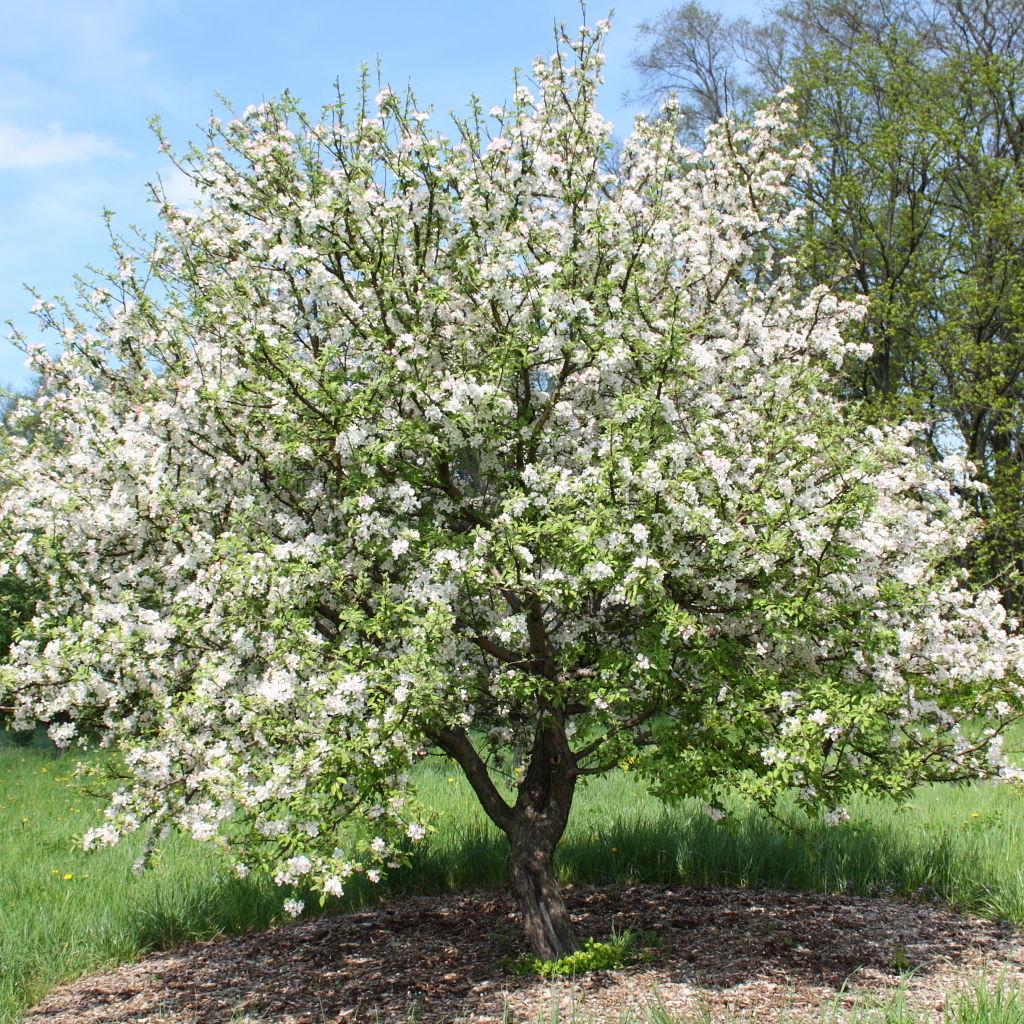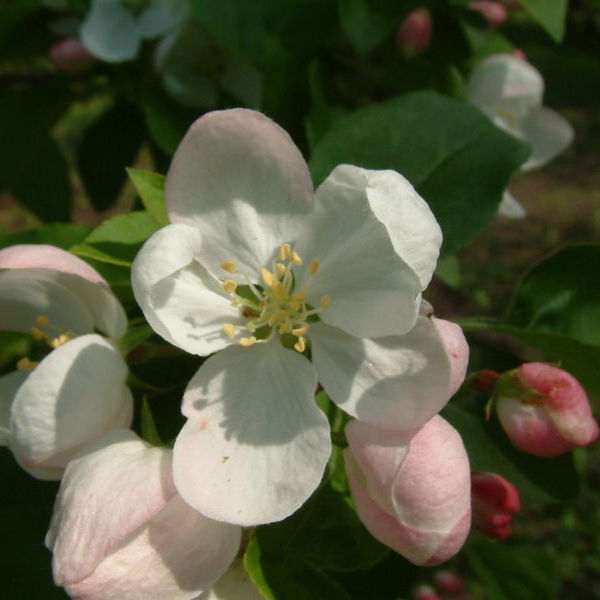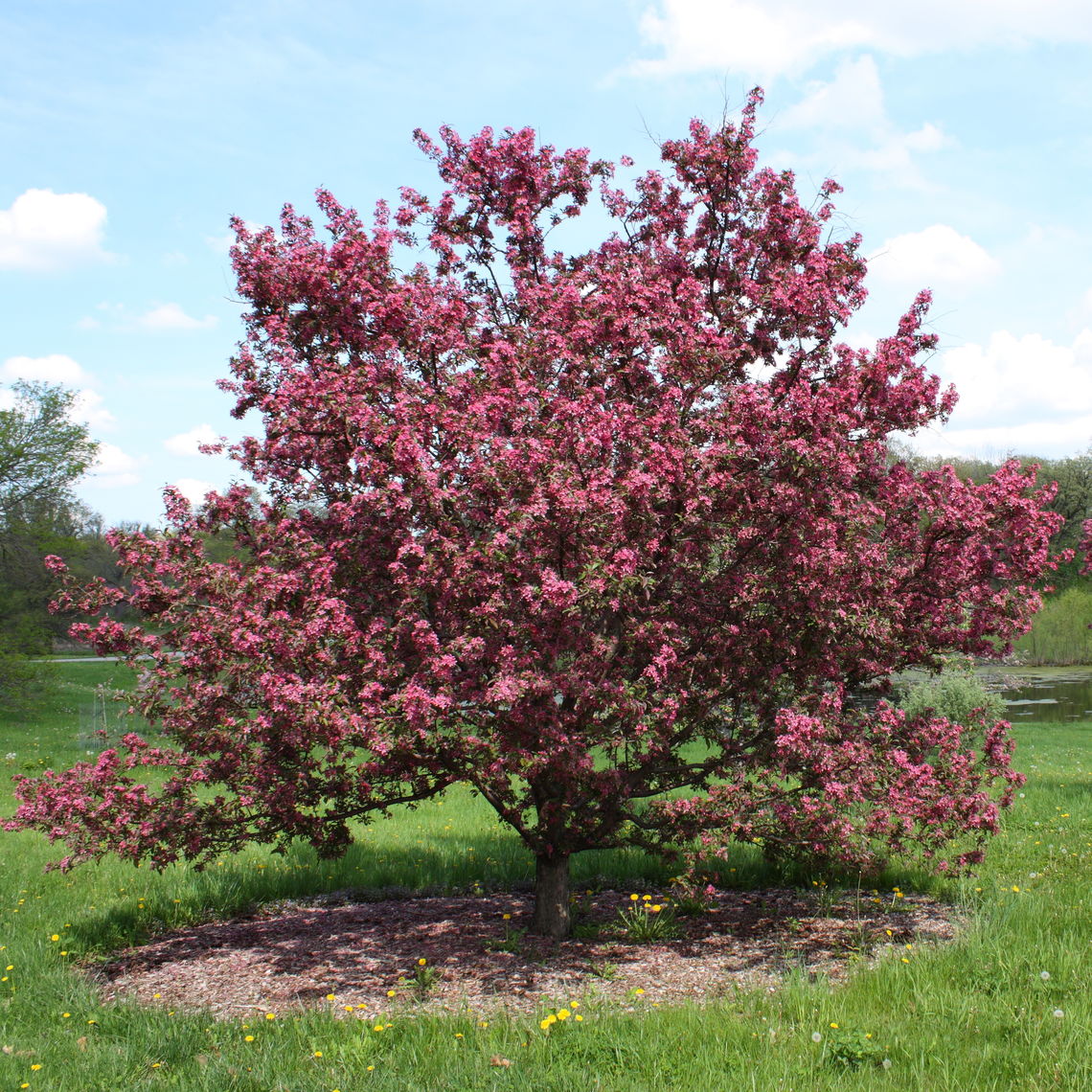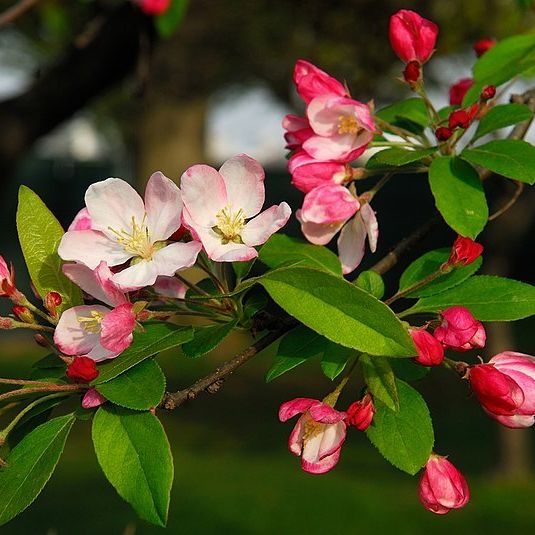Crabapple (Malus sp)
The crabapple is a small, ornamental tree that is often used in urban landscapes. It is noted for its full spring blooms of red-pink or white, slightly fragrant flowers. These flowers give way to small purple-red crabapples which mature in the fall. Crabapples do not grow larger than 2 inches in diameter. This tree attracts birds and small mammals.
Family: Rosaceae (Rose)
Characteristics: The ovate leaves are purple when they first emerge and mature to a dark green with red-tinged veins. In the fall, leaves turn orange. In May, red buds begin to appear on the tree and bloom into slightly fragrant, pink-red or white flowers. These flowers give way to large numbers of small, purple-red crabapples, which grow to be half an inch to 2 inches in diameter. This is a dense and rounded tree. It grows 15-20 feet high and wide.
Foliage: Deciduous (leaves lost seasonally)
Geographic Origin: North America (native)
Cultivation Notes: Requires low maintenance. Does best in full sun. Prefers medium-moist, slightly acidic, and well-drained soils, though can tolerate a wide range of soil types and conditions. This tree is tolerant of both cold winters and hot and dry summers.
Number on Campus: 31
Sources: Dirr, Morton Arboretum, Missouri Botanical Garden




